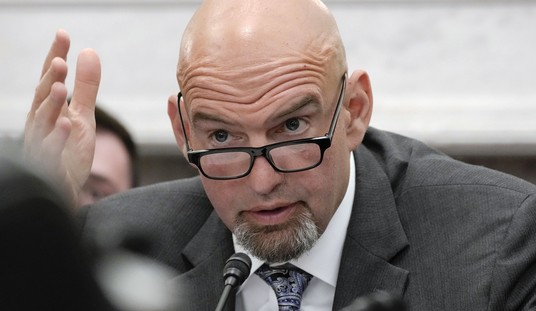The Israel-Gaza ceasefire that took effect Friday morning is an end to a brutal two-year war. But, even more than that, it’s a strategic move by an administration that knows you can’t fight every battle at once.
The Trump administration brokered a deal that European leaders praised for the president’s leadership. Israeli troops started withdrawing from parts of Gaza, 48 hostages will be released in exchange for roughly 2,000 Palestinian prisoners, and for the first time since October 2023, there’s a real path to peace.
This matters. But the bigger question is why Trump pushed so hard to get this done now.
Removing Distractions
The Trump administration isn’t pursuing peace out of idealism. They’re removing conflicts that drain American resources and attention. Israel-Gaza consumed diplomatic bandwidth, military focus, and political capital. That distraction is being eliminated.
READ MORE: Even Liberal Media Praises Trump’s Historic Gaza Deal
The pattern goes beyond the Middle East. Trump got frustrated with Putin’s refusal to negotiate. The administration resumed weapons deliveries to Ukraine in July, announced a plan where NATO countries buy American weapons and transfer them to Ukraine, and set a 50-day deadline for Russia to make peace or face tariffs.
Trump’s tone changed dramatically. He went from praising Putin to saying the Russian leader feeds him empty promises while launching missiles at Ukrainian cities. Putin thought he could manipulate Trump while continuing military operations. He was wrong.
Russia has proven to be a declining power with Soviet delusions. Their expected swift victory in Ukraine never happened. They’ve suffered massive losses and exposed their military weaknesses.
But Russia isn’t the main threat. Neither is Iran, whose nuclear program was damaged and military leadership killed by Israeli strikes. These are manageable problems.
China is different.
China’s Chokehold on Critical Materials
Thursday, China made a move that exposed American vulnerability. Beijing expanded export restrictions on rare earth elements—minerals needed for everything from consumer electronics to F-35 fighter jets. China now controls 12 of 17 rare earth metals, processes about 85 percent of global output, and manufactures nearly 90 percent of rare earth magnets worldwide.
China controls the materials we need for weapons systems, advanced technology, and critical infrastructure. They produce over 90 percent of processed rare earths globally, and they’re willing to weaponize that control.
Trump hit back. He announced an additional 100 percent tariff on Chinese goods starting November 1, bringing total tariffs to about 130 percent. He also announced export controls on critical software and suggested canceling his meeting with Xi Jinping later this month.
READ MORE: President Trump Takes ‘Countervailing Action’ With 100 Percent Tariffs
Markets dropped on the news, as expected. The S&P 500 fell 2.7 percent, its worst day since April. But this isn’t about short-term volatility. It’s about positioning against an adversary that’s been playing the long game while we’ve been distracted.
How China Built This Leverage
China didn’t stumble into rare earth dominance. They planned it. They made strategic investments that positioned China as essential to global supply chains, which they can now squeeze.
The restrictions go beyond raw materials. China is using its version of the Foreign Direct Product Rule—a tool America created—on rare earths. Any magnet with even traces of Chinese materials needs Beijing’s approval for export. They’re also blocking companies with foreign military ties from getting licenses and automatically rejecting military applications.
They’re trying to choke off our defense supply chains while protecting their own military edge.
While we focused on the Middle East and Eastern Europe, China built a legal and economic framework to pressure, retaliate, and control. They’ve deployed over 20 laws and regulatory tools spanning cybersecurity, foreign investment, and export controls.
Why America First Means Staying Engaged
Some conservatives want strict isolationism. They would like us to pull back from foreign conflicts, focus on domestic issues, and let other nations handle their own problems. I understand that thinking, but a true America First policy requires protecting American interests at home and abroad. Pure isolationism can’t protect American security and prosperity anymore. Modern supply chains, technology development, and economic competition make withdrawal dangerous.
China controls the materials we need for defense. They can manipulate global markets. They have technological and manufacturing capabilities that threaten American economic and military security. Ignoring this doesn’t make it go away. It just means we’ll be caught unprepared.
The Trump administration gets this. That’s why they’re resolving conflicts in secondary theaters. Israel-Gaza resolution means more focus on Ukraine-Russia. Russia-Ukraine stabilization would mean full attention on China. This is a strategic calculation from his administration.
The Timeline
Trump knows his window is limited. He’s term-limited, and his successor might not keep these policies. So he’s working fast.
The Israel-Gaza deal is phase one. Trump will visit Egypt and Israel for the signing, and 200 U.S. troops have arrived to establish a coordination center. Early signs suggest it might hold.
Russia-Ukraine is phase two. Trump got tougher on Putin, resumed weapons to Ukraine, and set deadlines backed by economic pressure. Will it work? Maybe. But Russia proved weaker than expected, and Europe is stepping up.
Phase three is China. We’ll see a major pivot toward addressing China in the second half of Trump’s term. This week’s rare earth confrontation is just the start.
What This Really Means
The Israel-Gaza ceasefire is a real achievement. Israelis celebrating with American flags, thanking Trump—that matters. The much-cried-about "humanitarian crisis" that potentially ends here matters. Hostages going home matters.
But understand the bigger picture. This isn’t just about the Middle East. It’s about positioning American foreign policy for the challenge that will define American security for decades.
China has been executing a long-term plan while our attention was divided. They control critical supply chains, they’re building economic leverage through strategic trade policies, and they’ll use that power. The Defense Department set a goal to develop a complete rare earth supply chain by 2027, but even with over $439 million committed since 2020, we’re nowhere close to China’s capabilities.
Trump grasped something basic: handle manageable conflicts first so you can focus on existential threats. Russia is a declining power with an economy smaller than Italy’s. Iran has been knocked back by Israeli strikes. North Korea stays contained through deterrence.
China is building, not declining. They’re gaining leverage, not losing it. And they have the patience to keep playing long-term while we exhaust ourselves elsewhere.
The good news is we’re finally treating China as the competitor they are. The trade war is real, tariffs are substantial, and the Trump administration is taking China seriously. The bad news is we’re starting from behind, and catching up requires sustained focus beyond any single presidency. That’s why these peace deals matter so much. It's not just for the regions affected, but for America’s ability to redirect resources toward the threat that keeps Pentagon planners awake.
The Israel-Gaza ceasefire is worth recognizing. But understand what it really is: Trump clearing obstacles to focus American power on the competition that will determine whether the United States stays the world’s leading power, or whether China takes that position.














Join the conversation as a VIP Member